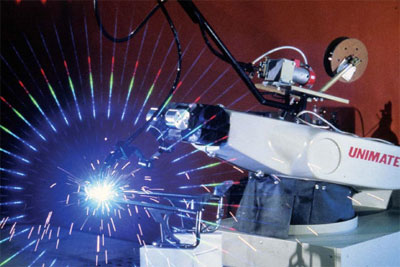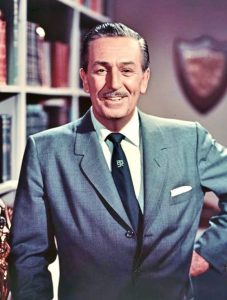Automating the World: Story of George Devol
Robots have been mankind’s fascination for quite some time. But the last two decades have seen them grow from being a science fiction object to reality. Many industries around the world now employ robots to improve their production lines. Automation is no longer a thing for the future, but rather has become a reality. But how did we first start using robots? Here’s a look at the story of George Devol who developed the first known robot.
About the Creator
George Charles Devol was born in 1912 to a wealthy family based in Kentucky. He did his schooling from the famous Riordan Prep school. Following his graduation, he decided not to go for higher studies. Instead, he went into business and founded United Cinephone in 1932. The company produced recording equipment for motion pictures or talkies. But on discovering that companies such as RCA and Western Electric were also working on similar products, he dropped the idea. When WW2 descended on the US, he was working on a proximity controller for washing machines. Finally, in 1939 he filed for a patent for his RF-based controller. This device was the first of its kind and could open laundry presses automatically. However, due to the war breaking out in Europe, the patent office closed down, and hence, Devol could not get his patent.
Work with Radars
It was around this time that he sold his shares in United Cinephone. Briefly after that, he met with Sperry Gyroscope to discuss his ideas on radars. Sperry then hired him as a Special Projects Manager and allowed him to work on radar devices. As the war intensified, the Auto-Ordnance Company approached him to make products for them. However, Devol turned their attention to the emerging field of radar technology. Later, in 1943, he started working for General Electronics Industries which was a subsidiary of the Auto-Ordnance Corporation. He helped with the production of counter-radar devices. Under his tutelage, General Electronics became the largest producer of radar equipment for the American forces. He resigned soon after the war due to differences in opinion with regards to future products.
Creating Unimate
He followed this up by working as a sales manager at RCA. But, he quit this job as he felt he didn’t fit in and started work on his robot. A year later, in 1946 he created a magnetic recording system and applied for a patent for it. He helped with the creation of the first commercial microwave oven, known as the Speedy Weeny. By the early 1950s, Remington Rand was using Devol’s recording device. Soon enough, he became the manager of their magnetics department. Over there he worked on magnetic recording systems, high-speed printing systems and other such devices. While the idea would not work out, Devol’s magnetic invention later became the Unimate robot.
Patenting and Raising Funds
In 1954, Devol got a patent for his concept of Programmed Article Transfer which would become the basis for Universal Automation or Unimation. Devol’s wife, Evelyn suggested the name Unimate for the robot. At the time of filing the patent, Devol wanted Unimate to be a general-purpose machine. After securing the patent which did not have any citations, Devol looked for an investor. While he talked to many companies, they turned him down due to the risks involved. Finally, using family connections, Devol met with Manning, Maxwell and Moore. Joseph F. Engelberger served as the chief of engineering at Manning, Maxwell and Moore which was based in Connecticut. Engelberger found the project interesting and was about to invest in it. Unfortunately, the company was sold off that year and the plan fell through.
Forming Unimation Incorporated
However, Engelberger convinced Consolidated Diesel Electronic to back the development of the robot. Hence Codec, formed a new division called Unimation Incorporated and Joseph Engelberger served as its president. The first Unimate prototype relied on digital switches and transistors. Further, digital encoders and other electronic parts available in the 1950s were not adequate for the Unimate. Hence, under Devol, a team of engineers built all the parts for the Unimates. Devol as a part of the process invented new technologies such as the rotating drum memory system and parity controls.
In 1961, the first Unimate robot was sold to General Motors to help with die casting and spot welding. In 1961. GM’s plant in New Jersey became the first one to utilise a material handling robot. The robot helped in lifting metal from the die-casting machine and stacking them. Soon enough, companies like Chrysler, Ford, and Fiat started purchasing the Unimate. By 1966, full-scale production facilities were set up in Connecticut and Unimate became a resounding success in the field of material handling.
Resounding Success
By 1975, the company was cash positive and was making a profit. The Programmable Universal Machine for Assembly or PUMA robot came out three years later through a collaboration with GM. Since then, industrial robotics has grown to become a massive field with a lot of large-scale applications. So much so, that in 2003, Unimate became a part of the Robot Hall of Fame for being the first of its kind.
While the first robot took over $5 million to develop, industrial robotics is now a sprawling field. Devol would later go on to obtain several patents on visual sensors and magnetostrictive manipulators. He is hence, known for creating the field of “micro-robotics”. George Devol was 9 years old when the word robot was coined. Decades later, he would be the one to invent the first programmable robot, which in turn, started a revolution that continues even today. With over 40 active patents to his name, Devol spent his life-giving wings to his ideas and turning them into real products.

Being a cinephile with a love for all things outdoorsy, Athulya never misses a chance to chase inspiring stories or poke fun at things, even when the subject is herself. Currently pursuing a degree in mechanical engineering, she is someone innately interested in technical and scientific research. Music reviews and op-eds define her as they allow her to explore different perspectives. Though sometimes she thinks she makes more sense playing the guitar than she does while writing.


